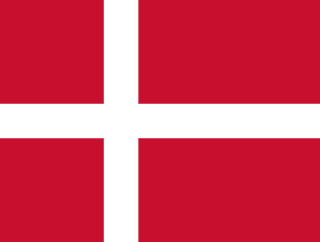Denmark - Geography

Here, let us take a look at the Geography of Denmark. Composed of the Jutland Peninsula and a group of more than 400 islands (Danish Archipelago); controls Danish Straits (Skagerrak and Kattegat) linking Baltic and North Seas; about one-quarter of the population lives in greater Copenhagen. Mother's mean age at first birth is 29.8 years (2020 est.) (), whereas, the Maternal mortality ratio is 4 deaths/100,000 live births (2023 est.)
Geographical data of Denmark
| Location | Northern Europe, bordering the Baltic Sea and the North Sea, on a peninsula north of Germany (Jutland); also includes several major islands (Sjaelland, Fyn, and Bornholm) |
|---|---|
| Geographic coordinates | 56 00 N, 10 00 E |
| Map references | Europe |
| Tarrain | low and flat to gently rolling plains |
| Natural Resources | petroleum, natural gas, fish, arable land, salt, limestone, chalk, stone, gravel and sand |
| Natural Hazards | flooding is a threat in some areas of the country (e.g., parts of Jutland, along the southern coast of the island of Lolland) that are protected from the sea by a system of dikes |
| Irrigated Land | 2,420 sq km (2022) |
| Major rivers (by length in km) | |
| Major aquifers | |
| Land Boundaries | 141 km |
| Border Countries | Germany 140 km; Canada 1.3 km |
| Coastline | 7,314 km |
| Climate | temperate; humid and overcast; mild, windy winters and cool summers |
| Area | |
| Total Area | |
| Land Area | 42,434 sq km |
| Water Area | 660 sq km |
| comparative Area | slightly less than twice the size of Massachusetts; about two-thirds the size of West Virginia |
| Maritime Claims | |
| Territorial sea | 12 nm |
| Contiguous zone | 24 nm |
| Exclusive economic zone | 200 nm |
| Continental shelf | 200-m depth or to the depth of exploitation |
| Elevations | |
| Highest point | Store Mollehoj 171 m |
| Lowest point | Lammefjord -7 m |
| Mean elevation | 34 m |
| Land Use | |
| Agricultural land | 65.6% (2022 est.) |
| Agricultural land: arable land | arable land: 59% (2022 est.) |
| Agricultural land: permanent crops | permanent crops: 0.8% (2022 est.) |
| Agricultural land: permanent pasture | permanent pasture: 5.8% (2022 est.) |
| Forest | 15.8% (2022 est.) |
| Other | 18.6% (2022 est.) |
Population Distribution
Population centers tend to be along coastal areas, particularly in Copenhagen and the eastern side of the country's mainland
People and Society
In Denmark, the different Ethnic groups are such that we have: Danish (includes Greenlandic (who are predominantly Inuit) and Faroese) 84.2%, Turkish 1.1%, other 14.7% (largest groups are Polish, Romanian, Syrian, Ukrainian, German, and Iraqi) (2023 est.)
| Population | |
|---|---|
| Pop growth rate | 0.44% (2024 est.) |
| Birth rate | 11.3 births/1,000 population (2024 est.) |
| Death rate | 9.6 deaths/1,000 population (2024 est.) |
| Health expenditure | |
| Physicians Density | |
| Hospital bed Density | 2.5 beds/1,000 population (2021 est.) |
| Total fertility rate | 1.77 children born/woman (2024 est.) |
| Gross reproduction rate | 0.86 (2024 est.) |
| Contraceptive prevalence rate | |
| Est married women (ages 15-49) | 59.6% (2023 est.) |
| Literacy | |
| Education expenditures | |
| Net Migration rate | 2.7 migrant(s)/1,000 population (2024 est.) |
| Nationality | Danish | Dane(s) |
| Languages | |
| Religions | Evangelical Lutheran (official) 71.4%, Muslim 4.3%, other/none/unspecified (denominations include Roman Catholic, Jehovah's Witness, Serbian Orthodox Christian, Jewish, Baptist, Buddhist, Church of Jesus Christ, Pentecostal, and nondenominational Christian) 24.3% (2024 est.) |
| Age Structure | |
| 0-14 years | 16.2% (male 496,793/female 471,018) |
| 15-64 years | 62.9% (male 1,903,315/female 1,856,615) |
| 65 years and over | 20.8% (2024 est.) (male 575,153/female 670,242) |
| Dependency Ratios | |
| Total dependency ratio | 57.2 (2024 est.) |
| Youth dependency ratio | 24.7 (2024 est.) |
| Elderly dependency ratio | 32.5 (2024 est.) |
| Potential support ratio | 3.1 (2024 est.) |
| Median Age | |
| Total | 42.2 years (2024 est.) |
| Male | 41 years |
| Female | 43.4 years |
| Urbanization | |
| Urban population | 88.5% of total population (2023) |
| Rate of urbanization | 0.54% annual rate of change (2020-25 est.) |
| Major urban areas (Pop) | 1.381 million COPENHAGEN (capital) (2023). |
| Sex Ratio | |
| At birth | 1.07 male(s)/female |
| 0-14 years | 1.05 male(s)/female |
| 15-64 years | 1.03 male(s)/female |
| 65 years and over | 0.86 male(s)/female |
| Total population | 0.99 male(s)/female (2024 est.) |
| Infant Motality | |
| Total | 3 deaths/1,000 live births (2024 est.) |
| Male | 3.4 deaths/1,000 live births |
| Female | 2.5 deaths/1,000 live births |
| Life Expectancy at birth | |
| Total population | 82.1 years (2024 est.) |
| Male | 80.2 years |
| Female | 84.1 years |
| Drinking Water Sources | |
| Improved: urban | urban: 100% of population (2022 est.) |
| Improved: rural | rural: 100% of population (2022 est.) |
| Improved: total | total: 100% of population (2022 est.) |
| Unimproved: urban | urban: 0% of population (2022 est.) |
| Unimproved: rural | rural: 0% of population (2022 est.) |
| Unimproved: total | total: 0% of population (2022 est.) |
| Sanitation facility acess | |
| Improved: urban | urban: 100% of population (2022 est.) |
| Improved: rural | rural: 100% of population (2022 est.) |
| Improved: total | total: 100% of population (2022 est.) |
| Unimproved: urban | urban: 0% of population (2022 est.) |
| Unimproved: rural | rural: 0% of population (2022 est.) |
| Unimproved: total | total: 0% of population (2022 est.) |
| Alcohol consumption per capita | |
| Total | 9.16 liters of pure alcohol (2019 est.) |
| Beer | 3.42 liters of pure alcohol (2019 est.) |
| Wine | 4.08 liters of pure alcohol (2019 est.) |
| Spirits | 1.66 liters of pure alcohol (2019 est.) |
| Other alcohols | 0 liters of pure alcohol (2019 est.) |
| Tobacco use | |
| Total | 14.3% (2025 est.) |
| Male | 14.4% (2025 est.) |
| Female | 14.3% (2025 est.) |
| Child marriage | |
| Women married by age 18 | 0.7% (2021) |
Demographic profile
All Important Facts about Denmark
Want to know more about Denmark? Check all different factbooks for Denmark below.









